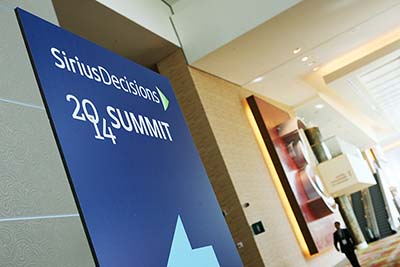Summit 2014 Highlights: The State of Marketing Automation
There’s this “silver bullet” myth circulating in B2B that goes something like this: If you implement a marketing automation platform (MAP), all your marketing wishes will be fulfilled. Jennifer Horton, research director of Demand Creation Strategies at SiriusDecisions, has encountered this over and over again. “I’ve been helping companies implement MAPs for years, and it always surprises me when they say, ‘This is great! We’re going turn it on, and it’s going to rain leads!’” If only it were that easy.
 Too many MAP owners are still scratching their heads, wondering when the deluge of leads will begin. Last week at Summit 2014 in Orlando, Jennifer along with Jay Famico, technology practice director at SiriusDecisions, presented the results of a survey of 237 B2B organizations that have implemented a MAP. One of the key findings of the study is that, although most respondents are finding value in their MAP, a third of those surveyed are disappointed in the level of value they derive from their MAP.
Too many MAP owners are still scratching their heads, wondering when the deluge of leads will begin. Last week at Summit 2014 in Orlando, Jennifer along with Jay Famico, technology practice director at SiriusDecisions, presented the results of a survey of 237 B2B organizations that have implemented a MAP. One of the key findings of the study is that, although most respondents are finding value in their MAP, a third of those surveyed are disappointed in the level of value they derive from their MAP.
Among other reasons for their dissatisfaction (e.g. inappropriate execution model, failure to establish a sound business process), organizations often underestimate the human resources required to drive MAP adoption, or they overburden existing resources, which limits their ability to use marketing automation to its fullest extent. During their Summit 2014 presentation on the state of marketing automation, Jay and Jennifer explained this disconnect and how to avoid it.
“How the heck can you expect it to rain leads and drive MAP processes if you don’t have anyone to drive the platform?” asked Jay. In the absence of a magic wand, “Automation can only work when the business process is clearly defined and you can scale the level of performance,” said Jennifer.
“I see a fundamental imbalance in the market – the rate of MAP adoption is outpacing user experience and skill development,” said Jay, which means that marketers with MAP experience are a precious commodity – thus they are highly sought after and well compensated. Just to give you an idea: More than 40 percent of MAP users have less than two years of experience.
So what’s the answer? Change your expectations. Accept that most MAP practitioners are individuals who are mastering a relatively new set of skills and are relatively new to B2B process transformation, so don’t expect them to be polished, seasoned veterans. “Instead of looking for someone with six to eight years of experience who’s polished and can make the case for the technology with executives, it may be more effective to groom internal MAP users for leadership roles,” said Jay.